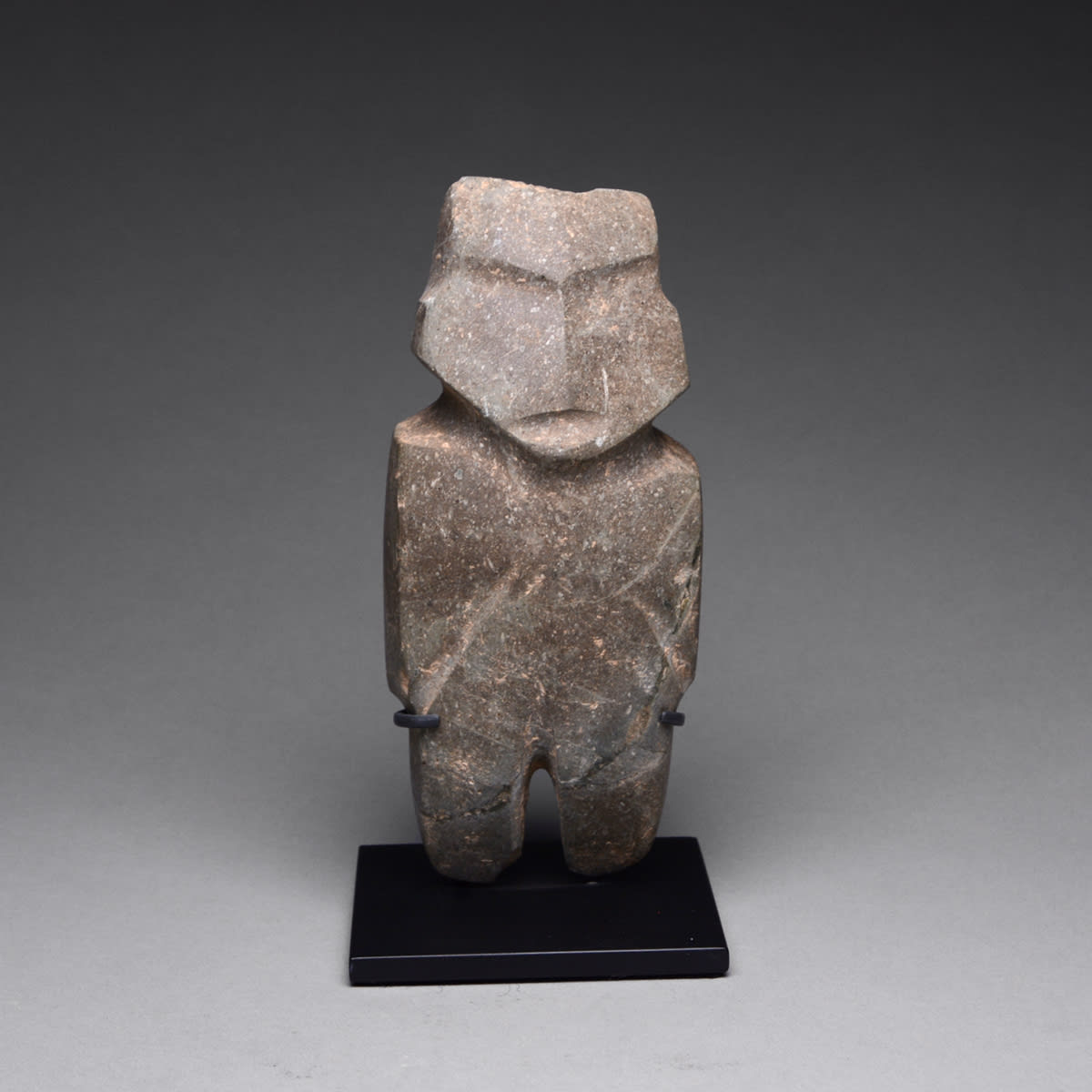Mezcala Stone Standing Figure, 300 BCE - 300 CE
Stone
height 16.5 cm
height 6 1/2 in
height 6 1/2 in
PF.5430
Further images
This sculpture exudes a force of the ages. It has witnessed the passage of seasons and the passage of civilizations. Today it stands as the reminder of a forgotten era....
This sculpture exudes a force of the ages. It has witnessed the passage of seasons and the passage of civilizations. Today it stands as the reminder of a forgotten era. However, superstition still pervades our modern society and our understanding of the universe and science still cannot provide the answers we long for. God is still the great unknown, be it scientific or religious. God will always exist at the limits of our understanding. Like a miniature Easter Island idol, this stone figure stands with open legs, folded arms, and protruding jaw and forehead. The actual contours of the statue echo the form of a phallus. Most likely, this statue would have been used as a pestle to grind up corn or wheat. Thus as the women of the tribe prepared the food, they would have held in their hands the symbol of male fertility, linking the immediate survival of the community through food with the procreation of the species through copulation. All at the same time invoking the favors of the gods. The power present in this statue is a real today as it was in ancient times. The basic essentials of life never change. This image of fertility, of nourishment, of the divine, is as relevant to our reality as it was to those who carved it.







